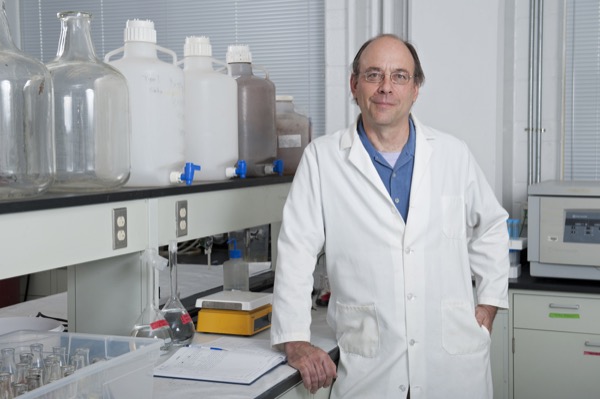UD research team tests sanitation system using breathable fabric technology
A group of University of Delaware students and researchers spent New Year’s in an unconventional way — installing sanitation systems in India.
A team of researchers led by Steven K. Dentel, professor of civil and environmental engineering, has been working for several years on a breathable fabric that can be used to line pit toilets and other basic sanitary facilities in developing nations.
Approximately 2.5 billion people around the world are still without adequate sanitation, which leads to water contamination responsible for hundreds of thousands of deaths each year. About a billion people still have to defecate in the open, without any privacy or sanitary facilities.
The fabric Dentel and his team are developing is similar to that used in sports jackets and raincoats; it only allows tiny water vapor molecules through.
Dentel realized this could be a valuable way to filter out liquid water from human waste, letting the pure water escape while retaining everything else. Sewage placed in a container of this fabric would become dehydrated and therefore less hospitable to bacteria and other disease-causing organisms.
Funded by the Bill and Melinda Gates Foundation, the project has been in the works for some time. The lab results look promising, but must still be tested in the field.
On Dec. 28, a small group led by doctoral student Shray Saxena headed to India to begin the first field test of the new fabric.
“A lot of people in India right now don’t have improved toilet systems,” says Saxena. “Even in cities like Kanpur, which are really quite developed, people do not have these facilities available to them.”
Because sanitation in these cities is often decentralized, an advantage of this disposal system is that it does not require connection to central water or sewage lines.
Families in two cities, Kanpur and Puri, are trying out the new “eco-vapor” toilet system, with sewage collected in 55-gallon drums lined with the breathable fabric, allowing water vapor to evaporate.
The group is observing how the fabric performs under varying conditions of heat and humidity, which affect the rate at which water diffuses through the membrane. If external humidity is high, the lined drums may fill up before enough of the water can evaporate.
The nongovernmental organization WaterAid India is partnering with the research group on site selection and implementation of the pilot project.
In addition to Saxena, the team that went to India included Paul Imhoff, professor of civil and environmental engineering, doctoral student Babak Ebraziakhshayesh and two undergraduate students, Kelsey McWilliams and Dianna Kitt.
UDaily article | Photo by Evan Krape

